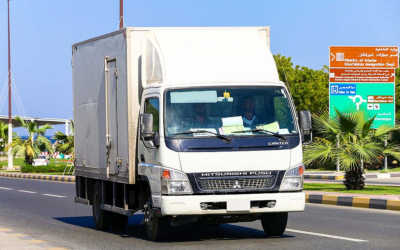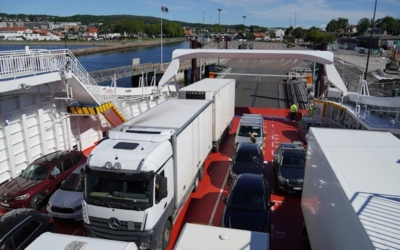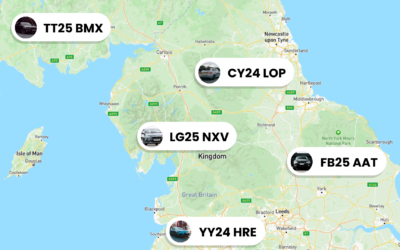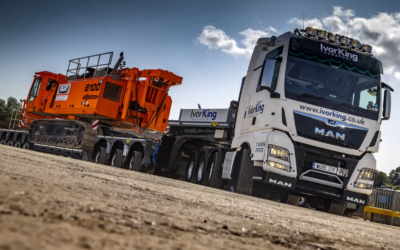Telematics Adoption Playbook for Fleet Managers
Introduction — Why a Telematics Adoption Playbook Matters
The business case in one paragraph
As a fleet manager, you already know the promise of telematics: better safety, lower fuel costs, improved utilisation and clearer compliance records. But without a structured approach, the benefits of telematics adoption often under-deliver. A playbook removes guesswork — it aligns stakeholders, defines measurable goals and protects ROI. Think of this as your practical roadmap to turn raw data into reliable improvements that your operations, drivers and finance team can trust.
Who this playbook is for
This guide is written for busy fleet managers running mixed fleets who need a repeatable, low-risk path to telematics adoption. It’s relevant whether you’re piloting your first devices, replacing legacy hardware or integrating telematics into wider Fleet Management systems. You’ll get checklists for pilots, vendor evaluation criteria and governance tips to keep data useful and secure.
Define Goals, Stakeholders & Success Metrics
Set clear adoption objectives
Start by naming the outcomes you want from telematics adoption. Avoid vague aims like “improve safety” — translate them into measurable objectives such as “reduce harsh braking events by 30% within six months” or “cut fuel cost per mile by 8% in the first year.” These concrete targets will shape pilot scope, training and incentives.
Identify stakeholders and roles
Map everyone who will touch the project: drivers, depot supervisors, fleet ops, IT, procurement and finance. Assign responsibilities — a senior sponsor (operations director), a project lead (fleet manager), an IT owner for integrations and a driver liaison. Clear ownership prevents scope creep and keeps decisions moving.
Choose success metrics and baseline data
Decide the KPIs that matter and capture baselines before you start. Examples: harsh events per 10k miles, fuel per mile, vehicle utilisation, on‑time deliveries and downtime. If you’re considering predictive maintenance, review current mean time between failures and link to relevant telemetry from the outset (see our guide on Predictive Maintenance for Fleets: Cut Downtime Fast).
Pilot Design & Vendor Selection
Scope the pilot and select pilot vehicles
A well-designed pilot proves value quickly. Choose a representative sample of vehicles, routes and drivers — include different vehicle types, day/night shifts and the most frequent routes. Keep the pilot to a manageable size (10–30 vehicles for many fleets) and plan for 8–12 weeks of live data to detect trends.
Evaluate vendors and tech requirements
When assessing providers, weigh hardware reliability, firmware update policies, ease of installation and API access. Ask for references and live dashboards. Prioritise vendors that support integrations with your TMS or ERP and that provide robust security controls. For deeper reading on securing your connected fleet, see the Fleet Cybersecurity Guide for IT & Operations Leaders.
Pilot timeline, budget & risk plan
Create a realistic timeline with key milestones: device install, one week validation, 4-week data review, and final evaluation. Budget for hardware, connectivity and a modest training allowance. Plan for common risks — failed installs, data gaps, and driver resistance — and schedule contingency checks to minimise downtime.
Implementation, Training & Change Management
Device installation and system setup
Execute installations during planned stops or maintenance windows to avoid disruption. Validate each device after install: firmware version, GPS lock, engine data and connectivity. Run a quick acceptance test with the driver and operations team and log serial numbers and SIM details in a central register for future troubleshooting.
Driver and staff training plan
Adoption is won or lost at the driver level. Use short, practical sessions — 15–30 minute demos, micro-training videos and one-page cheat sheets for driving behaviour and device operation. Reinforce training with periodic refreshers and coach-the-coach sessions for supervisors. Track adoption by logging completed training and monitoring key usage metrics.
Communication and incentives to drive adoption
Communicate the benefits clearly and honestly: emphasise safety, fair coaching and potential performance incentives rather than surveillance. Consider a short-term incentive programme for early adopters who meet behaviour targets. If you want to show operational gains from routing and coaching, pair telematics with route optimisation — see our post on AI-Driven Telematics Route Optimization for Fleets.
Ready to see how this works in your fleet? If you want a guided demonstration tailored to your fleet mix, Book demo with Traknova and we’ll walk through a pilot plan aligned to your KPIs.
Data Governance, Integration & Scaling
Data strategy and security practices
Define who owns the data, retention periods and access levels. Implement role-based access controls and log all data exports. Keep personal driver data separate where possible and anonymise for trend analysis. For more on protecting connected vehicles and data, read Fleet Cybersecurity: Protect Connected Vehicles & Data. Strong data governance safeguards trust and supports compliance with data protection laws.
Integrations and reporting workflows
Plan integrations early: telematics data should flow to your TMS, maintenance system and reporting dashboards. Use APIs to automate routine reports and alerts — for example, automated maintenance tickets triggered by fault codes feeds predictive workstreams. If you’re exploring maintenance gains, our predictive maintenance guides will help link telematics data to reduced downtime (Predictive Maintenance for Fleets: Cut Downtime with AI).
Scaling from pilot to full rollout
Decide to scale when pilot KPIs meet your pre-defined success thresholds and feedback is positive. Roll out in waves — by region, depot or vehicle class — to manage logistics. Maintain a support model: field technicians for installs, an IT owner for integrations and an internal training champion for continued adoption. Keep iterating; a mature telematics programme evolves with business needs.
Conclusion — Your Next Steps
Implementing a successful telematics adoption programme requires clarity, discipline and collaboration. Start small with a focused pilot, measure clear KPIs, protect your data and make driver engagement a priority. With the right vendor and governance in place, telematics will become a predictable tool for safety, efficiency and cost control — not just a data source.
Ready to translate this playbook into results? Book demo with Traknova for a free consultation and pilot plan tailored to your fleet’s needs. Our team will show how targeted telematics can deliver measurable ROI and safer drivers.
Frequently Asked Questions (FAQs)
How long should a telematics pilot run?
Plan for 8–12 weeks of live data to capture normal operating cycles and produce meaningful insights. Shorter pilots can provide quick technical validation but may miss seasonal or route variations.
What are the typical costs to budget for?
Include hardware, SIM/data, installation labour, platform subscription and a small training budget. Factor in integration costs if you need custom API work. For a deeper look at financials, check our Telematics ROI: Step-by-Step Guide for Fleet Managers.
How do I handle driver privacy concerns?
Be transparent: explain what data is collected, how it is used and who can access it. Limit access to personal-level data and focus on aggregated safety trends. Use incentives and coaching rather than punitive measures to secure buy‑in.
Can telematics help with EV fleets and charging?
Yes — telematics helps monitor energy use, range and charging patterns. If you’re planning electrification, pair telematics with a charging strategy and consult our Fleet Electrification Checklist for Fleet Managers for practical steps.
Who should I contact to get started?
If you’d like a tailored demo or pilot plan, Book demo with Traknova. For general enquiries, please contact us.
We’d love your feedback. If this playbook helped you, please share it with your network — a quick share on LinkedIn or Twitter helps other fleet managers find practical advice. What’s your biggest challenge with telematics adoption right now? Reply below or contact us with your thoughts — we read every message and use your feedback to improve our guides.
If you’re ready to see telematics in action, don’t wait — Book demo with Traknova and we’ll build a pilot plan around your immediate KPIs.










